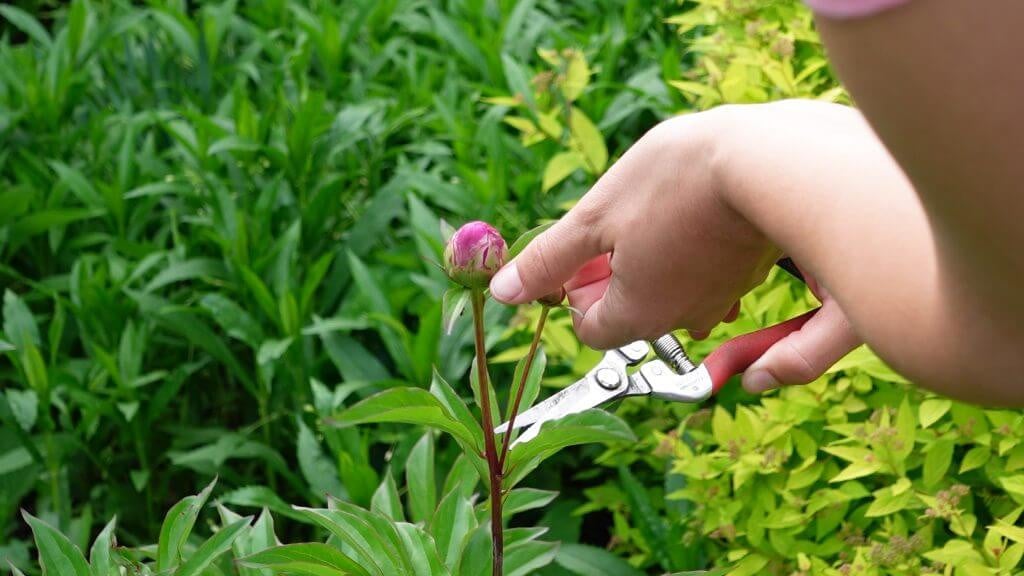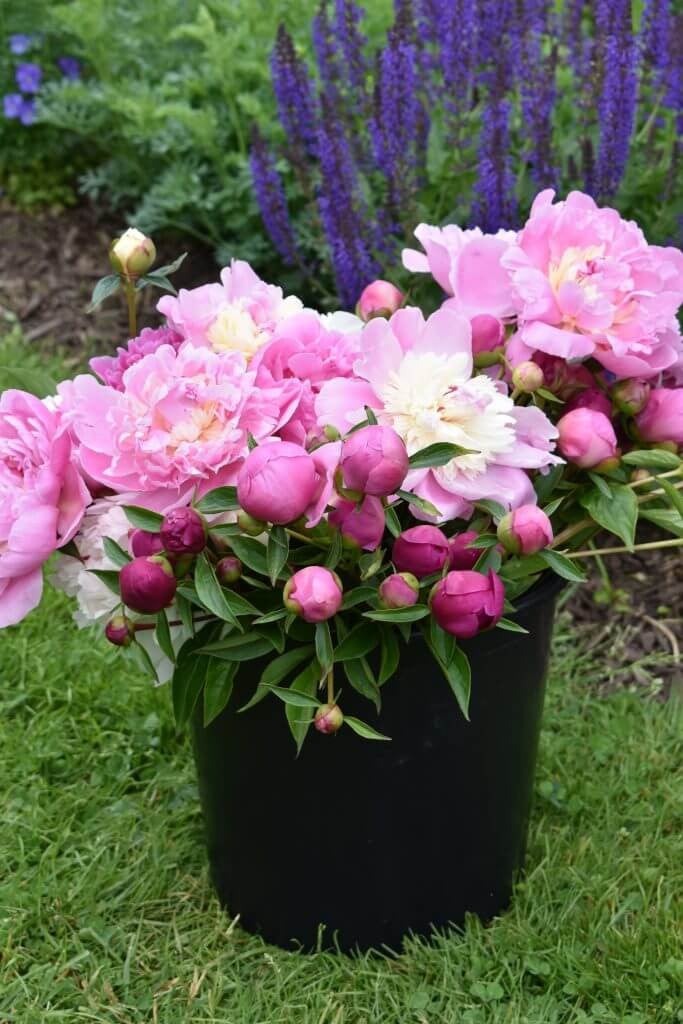How to Cut and Condition Peonies for a Long Vase Life
Peonies are the most decadent and captivating flowers in the late spring garden. Their layers of petals, delightful perfume, and old-world charm are impossible to resist. Enjoying these blousy blooms in the garden is a delight, but so is cutting them to bring indoors.
Peonies are excellent cut flowers and when harvested properly will last 7-10 days in a vase. You can cut them for home enjoyment, sell them at a farm stand, hold them in dry storage for a wedding, or sell them to a wholesaler or florist. Whatever your cut flower needs, here are tips on how to harvest, condition, and store peonies for a long and happy vase life.

Proper Planting Will Set You Up for Success
Peonies can be grown in zones 3-8 and may be planted in the fall or early spring. First, select a site that has full sun and well-draining soil. When planting the root, position it so the growth points (called eyes) are no more than 1-2 inches below the soil line. If a peony root is planted too deeply, the plant will produce foliage but no flowers. If planted too shallowly, the plant can heave out of the ground in winter, causing damage to the roots.

Be Patient with Young Peonies
Fall-planted peony roots that have 3-5 eyes may produce one or more flowers the next spring. Spring-planted roots will usually produce only foliage the first growing season.
There are two schools of thought on how to care for peonies in their first and second year. Some say to remove all the buds so the plant can concentrate on bulking up in size. Others allow one or two flowers to bloom, but do not cut them. Whichever school of thought you subscribe to, you should wait until year three to begin cutting flowers.

To Disbud or Not to Disbud
Mature peonies put up many flowering stems, and most varieties carry multiple buds on each stem. If you plan to sell your peonies to a wholesaler or florist, ask if they would like the side shoots disbudded. Disbudding yields a single-stemmed flower with a larger flower head. Generally, wholesalers expect a disbudded peony, and florist preferences vary.
 Removing side buds
Removing side buds
How to Harvest Peonies for the Longest Vase Life
Immature buds that are still hard should not be cut as they may not open in the vase. Wait until the buds have swelled and feel like a stale marshmallow when squeezed between your fingers. At this point, the green sepals that wrap the bud will have begun pulling away from the petals. Once cut, you can expect a peony bud in marshmallow stage to be fully open in 24-48 hours in a 68° F location.

When cutting peonies, leave behind as much foliage as possible. This will help the plant regenerate itself for next year. As with all cut flowers, it's best to harvest in the early morning or late evening. Place the cut stems immediately into cool, clean water. Peony buds may be held in water in a cooler for one week.

Dry Storage and Rehydration
If you want to hold your peony buds for longer than one week, they should be stored dry. It’s crucial for the flowers to be COMPLETELY dry when put into storage. Even a little morning dew can cause molding or botrytis issues.

Proper stage of harvest for dry storage.
For dry storage, harvest peonies in marshmallow stage and wrap the stems in paper, in bunches of ten. Place the wrapped bunches in bulb crates or a ventilated cardboard box, alternating placement of the peony heads as you stack them. Then place them in a refrigerator or cooler at 34/35° F. Dry stored peonies may be held for 3-4 weeks.

To rehydrate dry-stored peonies, remove them from cold storage and keep the paper wrapping intact. Cut one inch from the bottom of each stem and then put the wrapped buds into a bucket of clean, room temperature water. The paper wrapping should stay in place for a few hours until the flowers are fully rehydrated.
Favorite Varieties for Cutting
Festiva Maxima - This heirloom peony has generations of admirers. Festiva Maxima has plush, creamy white flowers with loads of petals that are flecked with a touch of crimson. It's the perfect peony for weddings with an exceptional perfume and huge blooms. Festiva Maxima was introduced by French breeder Auguste Miellez in 1851 and won the Royal Horticultural Society's Award of Garden Merit in 1993.

Coral Charm – A favorite with florists and a Gold Medal winner from the American Peony Society in 1986. The loose, semi-double flowers feature a flounce of coral and cream petals surrounding a golden yellow center. The plants have strong stems and attractive, deep green foliage.

Sarah Bernhardt - Sarah Bernhardt is one of the world's most beloved peonies. As popular today as when it was first introduced in 1906. The buds resemble raspberry ripple ice cream and open to a pale pink petticoat of a bloom.

Black Beauty - This dazzling, wine-red peony will sparkle like a jewel in your early summer garden. Its blossoms are packed with silky petals and you'll want to bury your nose in their wonderful fragrance.

Duchesse de Nemours - This gorgeous heirloom peony is still considered among the best double whites ever introduced. Glossy foliage and tall, sturdy stems make it an outstanding cut flower. Moreover, she received the Royal Horticultural Society Award of Garden Merit in 1993.

To learn more about growing peonies, read: All About Peonies and How to Stretch the Peony Season. Also, check out this video on How to divide and transplant peonies.
